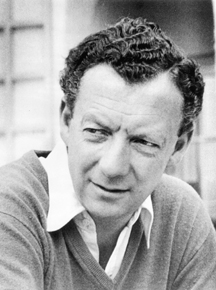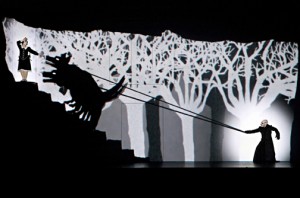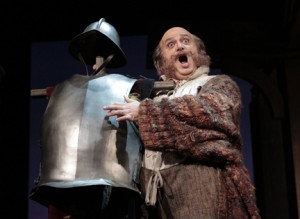By Robert D. Thomas
Music Critic
Pasadena Star-News/San Gabriel Valley Tribune/Whittier Daily News
Benjamin Britten: War Requiem
The Colburn Orchestra and members of the USC-Thornton Symphony; James Conlon, conductor
Tamara Wilson, soprano, Joseph Kaiser, tenor, Phillip Addis, baritone
USC Thornton Chamber Singers (Dr. Jo-Michael Scheibe, conductor)
USC Thornton Concert Choir (Dr. Christian Grases, conductor)
Bob Cole Conservatory Chamber Choir from CSU-Long Beach (Dr. Jonathan Talberg, director)
CSU-Fullerton University Singers (Dr. Robert Istad, conductor)
Chapman University Singers (Dr. Stephen Coker, director)
Los Angeles Children’s Chorus (Anne Tomlinson, artistic director)
New Zealand Youth Choir (David Squire, music director)
November 25, 2013 at Walt Disney Concert Hall, Los Angeles.
________________________
Benjamin Britten’s War Requiem is one of the monuments of choral literature. It stands with the Requiems of Mozart, Brahms and Verdi and alongside other choral masterpieces such as Handel’s Messiah.
But there’s a catch. Britten’s magnum opus is so rarely performed that its emotional impact seems outsized when compared with the others on this list. Familiarity doesn’t breed contempt but it certainly lessens the effect of these better-known pieces.
At last night’s preconcert lecture immediately preceding a stunning performance of War Requiem at Walt Disney Concert Hall, when Conductor James Conlon asked how many people would be hearing the piece for the first time, nearly every hand was raised. Imagine how staggered you would feel if you were hearing, for example, Verdi’s Requiem or Handel’s Messiah for the first time.
Thus it’s truly amazing that this rare performance of War Requiem, was sung and played not by the Los Angeles Philharmonic or one of our other professional ensembles but by about 400 instrumentalists and choristers, all college age or younger, along with three soloists. What could have been a train wreck was instead a vibrant, cohesive unified front, all under the steady hands and baton of Conlon, who somehow managed to sandwich this concert and last Sunday’s performance in Costa Mesa between conducting Verdi’s Falstaff and Mozart’s The Magic Flute for Los Angeles Opera.
The two local War Requiem concerts took place just days after the 100th anniversary of Britten’s birth; the 50th anniversary of President John K. Kennedy’s assassination added to the emotional nature of the evening.
How Britten, a pacifist, came to write War Requiem is reasonably well known (you can read some of the details in my preview story HERE). The basics are that he was commissioned to write a piece of his choosing for the dedication of the new St. Michael’s Cathedral in Coventry, England. The premiere took place on May 30, 1962.
Part of Britten’s genius in writing War Requiem was that he melded the traditional Roman Catholic Requiem Mass text with gritty poetry written by Wilfred Owen during World War I. (Ironically, Owen died on Nov. 4, 1918, exactly one week — almost to the hour — before the signing of the Armistice that ended the war; he was awarded a posthumous Military Cross). As a preface to War Requiem, Britten quoted Owen: “My subject is War, and the pity of War. The poetry is in the pity. All a poet can do is warn.” That’s just a sample of the emotional impact of the poems.
Another aspect of the work’s greatness is how Britten deployed his forces. The adult choral forces (182 voices, if everyone listed in the printed program actually sang) join with the soprano soloist to sing the traditional Requiem text, accompanied by a full-sized orchestra. A children’s chorus, accompanied by an organist, adds a potent angelic element at key points, sung last night from the top rear balcony. Tenor and baritone soloists, simulating a German and English soldier, sing Owen’s poetry, accompanied by an ensemble of 13 instruments.
In some performances, the male soloists and chamber orchestra are separated from the main body and led by a second conductor (indeed, that’s how the premiere performance was played; Britten conducted the smaller contingent while Meredith Davies led the City of Birmingham Symphony Orchestra).
However, Conlon chose to conduct the entire performance by himself, placing the chamber ensemble directly in front of him with the larger orchestra behind them. The male soloists — tenor Joseph Kaiser and baritone Phillip Addis — flanked the conductor’s podium, while soprano Tamara Wilson sat in the middle of the front row of choristers on the choral benches. Conlon led some portions using a baton; for many of the choral sections, he laid down the stick and conducted with expressive hands.
The choral forces delivered a beautiful tone and were amazingly precise throughout the 84 minutes, but particularly in the extended fugal writing in the “Dies Irae” sections . The combined children’s choruses floated gorgeous sound with precise diction from their “heavenly” location in Disney Hall.
Soprano Tamara Wilson, symbolizing a Russian soldier, poured out rich opulent sounds that carried even over the combined choral and orchestral forces. Her melding with the chorus in the “Lacrimosa” was a highlight of the evening.
Tenor Joseph Kaiser, singing music written for Britten’s life partner, Peter Pears, delivered that bright tone so favored by English composers and Kaiser’s diction so precise that the projected supertitles were not needed. Baritone Phillip Addis’s voice turned gravely in the lower registers but he was emotionally strong in delivering some of Owen’s most poignant lines.
The Colburn Orchestra and members of the USC-Thornton Symphony played splendidly, especially given the fact that, according to one story, only Concertmaster Jeffrey Myers had ever played the work before. The 13-member ensemble (the same number that Britten used to accompany his three chamber operas) passed Britten’s melodies from hand to hand, as it were, while offering sympathetic accompaniment to Kaiser and Addis.
All forces eventually join in the final movement, “Libera Me,” in which Kaiser and Addis sang Owen’s “Strange Meeting,” a commentary on companionship between enemies after one has killed the other, interspersed with the final words of the Mass. Two bells — C and F-sharp — continue to toll as they have throughout the piece and the chorus finally dies away in a mysterious vapor. The capacity audience sat spellbound, silent for 20 seconds, before erupting in wave after wave of standing ovations for the performers — and, one thinks, also for the piece. Conlon appeared to be spent emotionally; for most of the audience, the feeling was the same.
Hemidemisemiquavers:
• Conlon’s typically erudite preconcert lecture was particularly helpful in showing the influences of Verdi, Berlioz and Mozart on Britten’s writing.
• The organist last night was Christoph Bull, head of the organ department at UCLA, a nice — if somewhat ironic — touch to counterbalance the presence of the USC-Thornton Symphony and two USC choirs.
• In honor of the Britten centennial, Decca has released a newly remastered version of the original recording of War Requiem, featuring the three singers who Britten intended to sing the premiere: Galina Vishnevskaya (Russian soprano), Peter Pears (English tenor), Dietrich Fischer-Dieskau (German baritone). Because of international tensions, Vishnevskaya didn’t sing at the premiere (English soprano Heather Harper stepped in) but Vishnevskaya did perform in the original recording. The new version include a CD of War Requiem, , a Blu-Ray Audio format, which allows the recording to be heard at 24-bit, and a CD featuring Britten in rehearsal at the sessions in January 1963, which was produced by the legendary John Culshaw.
_______________________
(c) Copyright 2013, Robert D. Thomas. All rights reserved. Portions may be quoted with attribution.




